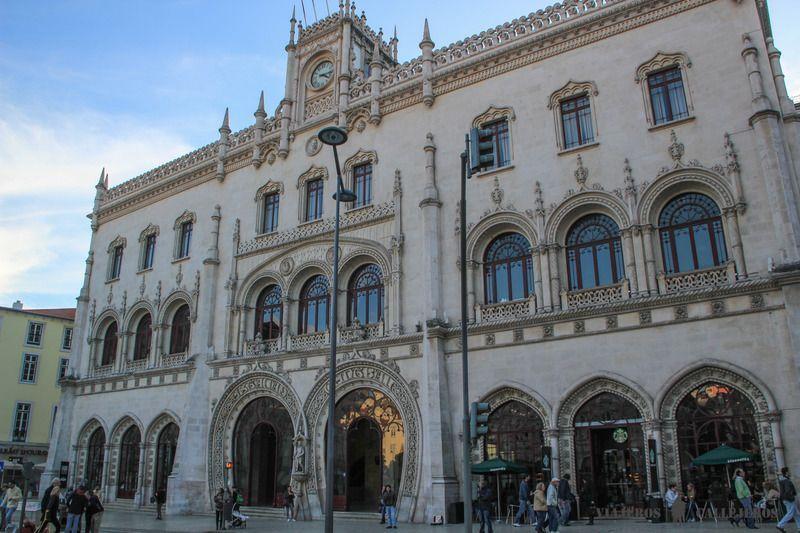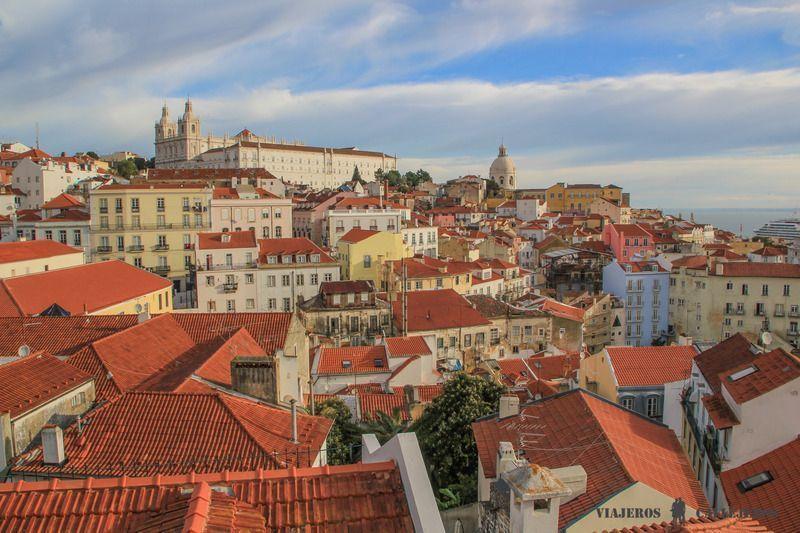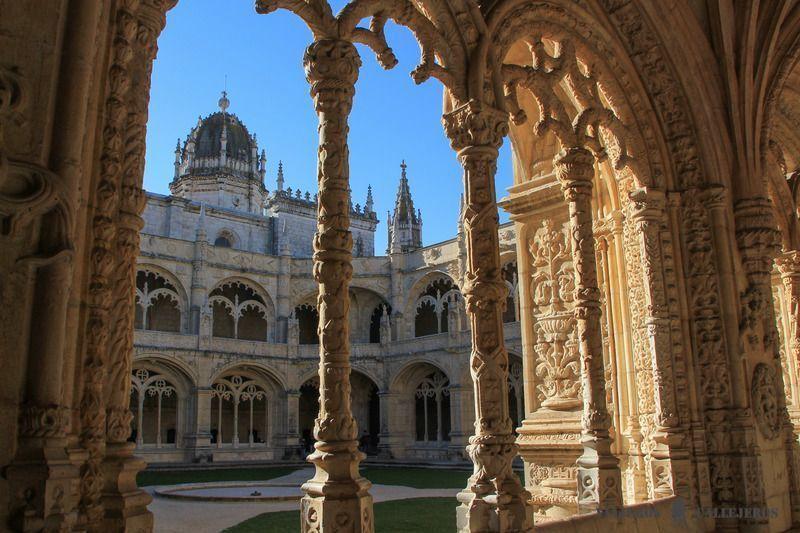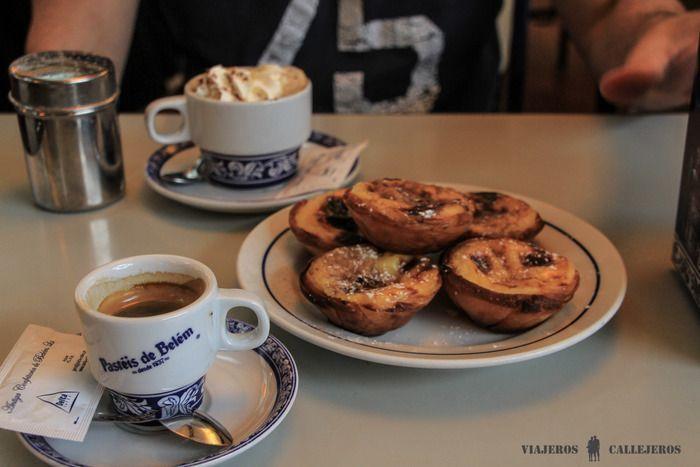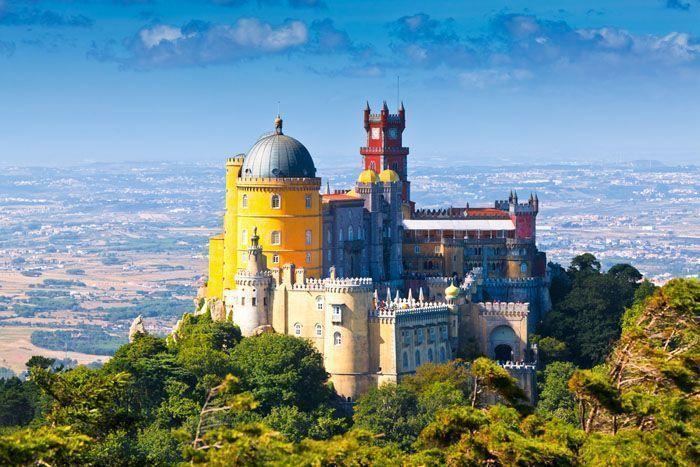This travel guide to Lisbon will help you to prepare your getaway to a city full of unforgettable places that all travellers who visit it fall in love with.
In Lisbon, known as the city of the 7 hills, you can enjoy the city while strolling through decadent and romantic neighbourhoods such as Alfama, watching the sunset from one of its magnificent viewpoints, tasting pastéis de Belém, touring the city in an antique tram or listening to the melancholic singing of the fado in a traditional tavern, among many other things.
Based on the experience of our 4-day trip to Lisbon, on which we wrote this Lisbon guide, we have made this selection of the 10 must-do Lisbon travel tips. Let's get started!
1. When is the best time to travel to Lisbon?
Although it's always a good time to travel to Lisbon, the best time of year is spring and autumn, when temperatures are pleasant and prices are more affordable.
In summer, temperatures soar to 35 degrees Celsius as the number of tourists and hotel prices rise.
Winters, while not as cold, tend to be rainy, with shorter daylight hours and lower prices.
2. Entry requirements for travel to Lisbon
Citizens of Spain and all European Union countries do not need any kind of visa to travel to Lisbon, they only need to show their ID card or passport. To find out the entry requirements, if you are from another country, it is advisable to check with the Portuguese Embassy or look at the website of the Ministry of Foreign Affairs of your country.
Another almost obligatory document if you are from the European Union is the European Health Insurance Card, which covers any medical mishap. If you are from another country or want more comprehensive cover including services such as repatriation, we recommend you take out the best possible travel insurance.
Due to the current health situation, all Mondo insurances include medical assistance in case of coronavirus infection. Also included is the extra stay you need in case of quarantine infection and of course, the test in case it is necessary.
3 How to get from Lisbon airport to the centre or to your hotel?
Lisbon or Portela Airport is located 7 kilometres from the city and has two terminals connected by a free shuttle bus. The transfer options from the airport to the city centre or to your accommodation are as follows:
Metro: the red metro line from Terminal 1, operating from 06h to 01h, will take you to the centre in half an hour for 1.95 euros. To get to the more central stations such as Baixa Chiado and Rossio, you will have to change at Sao Sebastio, to connect with the blue line, or at Alameda for the green line.
Bus: Aerobus line 1 takes you to the central stations of Rossio and Praça do Comércio in about 20 minutes for 4 euros or 6 euros if you buy a return ticket. If you arrive in the early hours of the morning, line 208 drops you off at the Plaza del Comercio and Plaza de Figueira stops in half an hour for 1.95 euros. You can book the Aerobus here in advance.
Private transfer to the hotel: a driver will take you directly from the arrivals terminal to the door of your hotel in less than half an hour. You can book it here.
Taxi: it costs between 15 and 20 euros.
You can find more information on how to get from Lisbon airport to the city centre in this post.
Rossio Station, one of the places to see when travelling to Lisbon4. Where to sleep in Lisbon?
If you are travelling to Lisbon, especially in summer, we recommend you book your accommodation several months in advance to find a hotel in a good location and at a good price.
Our favourite area to stay in Lisbon is Alfama, the most charming and picturesque neighbourhood in the city and although the public transport links to other parts of the city and the airport are not as good as around Rossio Square and Commerce Square, it is counterbalanced by the authenticity of the neighbourhood and the views of the city.
We stayed at the This is Lisbon Hostel, located just 5 minutes walk from Rossio metro station and St. George's Castle, which in addition to its excellent location, has a terrace overlooking the city, a full breakfast and some of the best value for money in the city.
If you prefer a more central hotel, we recommend the Rossio Garden Hotel and the Inn Possible Lisbon Hostel, located very close to Rossio station.
If you want to stay in an area with better transport links and more entertainment and restaurants, we recommend looking around Avenida da Liberdade, which runs from Marquês de Pombal Square to Rossio Square.
Another good area to sleep in is Baixa, which runs from Rossio to Praça do Comercio, as it has a wide range of hotels and is close to all the city's points of interest.
Two other charming neighbourhoods to look for a hotel or hostel are Chiado and Bairro Alto, where you'll find some of the city's best shopping, historic cafés and lively nightlife.
A good option to find your perfect accommodation is to use this recommended search engine.
For more information, check out this post on where to stay in Lisbon.
Alfama neighbourhood, one of the best places to visit when travelling to Lisbon5. How to get around in Lisbon?
One of the best tips for travelling to Lisbon is to get around as much of the city as you can on foot and only use public transport to get to the highest viewpoints and more distant neighbourhoods such as Bélem.
Lisbon's oldest and most popular form of public transport is the tram, which is an attraction in its own right.
A good way to try it out is to take a trip on the historic yellow 28 wooden tram, which runs from St. George's Castle to the Bairro Alto, passing through the city's most famous neighbourhoods.
Another popular tram is number 15, which will take you from the Place du Commerce to the Bélem district, home to the Hieronymites Monastery, the Bélem Tower and the Monument to the Discoveries.
Each tram ride costs almost 3 euros so it pays to buy the Lisbon Card, which offers unlimited public transport and free entry to more than thirty attractions including the Hieronymites Monastery and the Bélem Tower. You can find more information about this tourist card in this Lisbon Card post
Tram schedules depend on each line, but they are usually operational from 7am to 9pm.
The metro is a good option for transfers from the airport, but not for getting around the city centre, as it does not have stops in essential neighbourhoods such as Alfama or Bélem.
The bus is also not a very common means of transport for getting around the city centre and we would only recommend it for getting to the airport or to the Parque das Nações, the modern part of the city.
However, what is very practical for getting around Lisbon are the elevators, a kind of funicular railway that takes you up the steepest slopes and up to fantastic viewpoints. Among the most famous are the Elevador de Santa Justa, which connects the Baixa and Bairro Alto neighbourhoods, and the Elevador da Glória, which takes you to the viewpoint of San Pedro de Alcántara.
Taking elevators, one of the best tips for travelling to Lisbon6. Places of interest when travelling to Lisbon
Another of the best tips for travelling to Lisbon is to make a list of all the places you want to visit and experiences you want to have, in order to make the most of your time.
The Alfama district is a good place to start getting to know the city, as it concentrates some of the most essential points of interest, such as the viewpoints of Santa Lucia and Portas de Sol, our favourite in the city.
In this area, as well as strolling through the steep, labyrinthine cobbled streets of the neighbourhood, we recommend you visit the Sé, Lisbon's Cathedral.
Next to Alfama is St. George's Castle, a fortress with great views of the city and the Graça viewpoint, perfect for watching the sunset.
Another of our favourite neighbourhoods is the bohemian Chiado, which has historic cafés such as Café a Brasileira and fantastic bookshops such as Livraria Bertrand, considered the oldest in the world. But our favourite spot in the neighbourhood is the ruins of the Convento do Carmo. To get to this neighbourhood we recommend taking the spectacular Elevador de Santa Justa.
A few metres from Chiado is the Bairro Alto, which has some of the best nightlife in the city, such as Pavilhão Chinês and Music Box, as well as the fantastic viewpoint of San Pedro de Alcántara.
An interesting option to get to know the history of the most popular neighbourhoods in the city centre is to book this free tour of Lisbon with an English speaking guide, considered one of the best free tours in Lisbon.
Between Alfama and Chiado is the Baixa neighbourhood, which offers a nice walk along the shopping street Rua Augusta to the Praça do Comércio, located on the banks of the Tagus River.
From Praça do Comércio you can take tram 15, which will take you to the Belém neighbourhood, or book this boat trip on the Tagus, which will drop you off next to the Belém Tower.
In the Belém neighbourhood you can't miss the Jerónimos Monastery, the Bélem Tower, the Monument to the Discoveries and above all, try the freshly baked pastries at the Pastelería or Pastéis de Belém.
As the cherry on top of a trip to Lisbon you can book this sunset sailing trip on the Tagus, where you'll cross the 25th of April Bridge and see the city's most famous neighbourhoods from a different perspective.
A good way to make sure you don't miss out on anything in Lisbon is to complete this list of the 10 must-see places to visit in Lisbon and this list of the best things to do in Lisbon.
7. Routes around the city
Before travelling to Lisbon or leaving your hotel, it is important to plan your itineraries on foot and by tram around the city to get as many experiences as possible.
The whole of the historic centre can be covered on foot and you can also take the elevators, tram 28 to the centre and tram 15 to the Bélem district.
To make sure you don't miss anything and to learn about the history of Lisbon's main neighbourhoods, it's a good idea to take a tour with an English-speaking guide. Among the most recommended tours to get to know the famous Bélem neighbourhood is
, which includes a visit to the Jerónimos Monastery, or this free tour of Belém for free! both with an English speaking guide.
Another labyrinthine neighbourhood where you can find the true essence of the city and where it is very useful to book a free tour with an English speaking guide, is Alfama.
Based on the days we spent in Lisbon we have made these three personalised guides to get to know the city according to the days you have available.
Lisbon in one day
Lisbon in two days
Lisbon in 4 days
Visiting the Jerónimos Monastery, one of the things to do when travelling to Lisbon8. Where to eat in Lisbon?
Another reason to travel to Lisbon is to try its delicious gastronomy, always accompanied by a good Portuguese wine. Some of the most typical dishes are:
Bacalhau com Natas: crumbled baked cod, onion, fried potatoes and cream.
Bacalhau a Brás: a cod casserole with onions, fried potatoes and egg.
Sardinhas: grilled sardines.
Caldo verde: soup made from mashed potatoes with cabbage strips.
Caldeirada de peixe: traditional stew, made with different fish cooked together in a cauldron.
Carne de porco à alentejana : combination of pork and clams, with potato and coriander.
Arroz Doce: rice with milk, sugar, lemon and cinnamon.
Pasteles de Belem: puff pastry dough filled with a pastry cream.
Among the most recommended restaurants, located in tourist places, to try these typical dishes, you have: Da Prata 52, Paladarium, Os Jeronimos, Tasca Mastai, Restaurante Duque, Tapa Bucho, Flor da Laranja, Marisqueira M and Ti Natércia.
After lunch we recommend you try the delicious freshly baked pastéis de Belém at Pastelería o Pastéis de Belém or at Manteigaria.
For more information, read this post on the best restaurants to eat in Lisbon.
For a drink in the evening, Lisbon has a wide range of charming places such as Café a Brasileira, Pavilhão Chinês, Cervejaria Trindade or the Artis bar.
Bélem9 cakes. Excursions when travelling to Lisbon
A good way to round off a trip to Lisbon is to take an excursion to some of the must-see places to visit in Portugal, which are located close to the city.
These day trips by public or private transport will take you to places such as Sintra, Cascais, Óbidos, Fátima and Setúbal, among others.
One of the best day trips from Lisbon, if not the best, is a visit to Sintra, a town famous for its magnificent palaces and gardens.
A World Heritage Site and located in a natural park, the Pena Palace and the Quinta da Regaleira are the most important places to visit in Sintra.
To get from Lisbon to Sintra, located half an hour away, you can take a train from Rossio, Oriente or Sete Rios stations.
If you have extra time, you can take a bus to Cascais, 20 minutes from Sintra, an old fishing village with beaches and a charming historic centre.
The second recommendation is to complete this list of places to see in Óbidos, one of the most beautiful villages to visit in Europe.
After strolling through its medieval historic centre surrounded by 15th century walls, you can return to Lisbon or head to the Basilica of Fatima, one of the most important pilgrimage sites in the world, thanks to the 6 apparitions of the Virgin Mary in 1914.
The best way to visit these two wonders is by rental car as they are not well connected by public transport. Another option is to visit them separately by taking a bus from Lisbon's Campo Grande station to Óbidos and another from Sete Rios station to Fátima.
The last recommended excursion when travelling to Lisbon is the Arrábida Natural Park, which is noted for its limestone cliffs and wild nature. During the tour you can also visit the city of Setúbal with several interesting churches and fortresses, and the fishing village of Sesimbra.
If you don't want to rent a car you can go to Setúbal from Sete Rios or Roma-Areeiro station and to Sesimbra by bus from the Plaza de España.
A more comfortable and interesting way to visit all these places, learning about their history, is to book one of these day trips with an English speaking guide:
Book excursion to Sintra & Cascais + Pena Palace
Book a day trip to Sintra and Cascais + Quinta da Regaleira
Book excursion to Óbidos and Fátima
Book excursion to Setúbal, Arrábida and Sesimbra
More tours and excursions in Lisbon.
Pena Palace10. More Lisbon travel tips
Other top tips for travelling to Lisbon are:
Learn some Portuguese words such as bom dia (good morning), boa tarde (good afternoon), boa noite (good evening), obrigado/a (thank you), está bom (it's fine), sim (yes), não (no) and perdão (sorry).
Try Ginja, a sweet cherry liqueur that originated in Lisbon, in the small bar A Ginjinha.
Listen to Fado, the most famous expression of Portuguese music, at Tasca do Jaime or book this evening tour with dinner and Fado show.
Buy a Gallo de Barcelos, the most typical souvenir of Lisbon and Portugal.
Although Lisbon is not a dangerous city, in crowded places, such as on the trams, it is best to carry your backpack in front of you and keep an eye on your wallet.
Follow this list of the best travel tips for Portugal.
